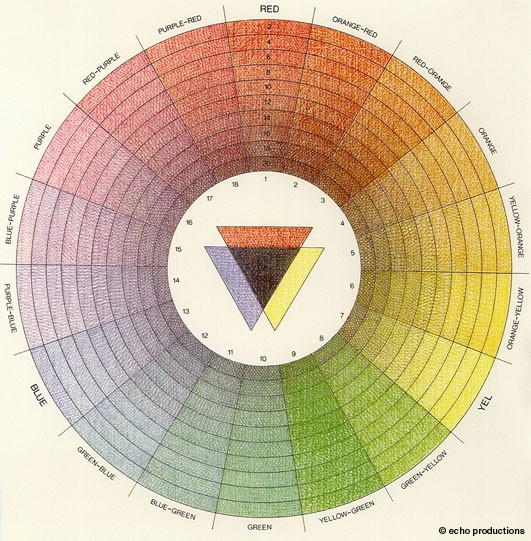
BLOG
Big Data | Make Better Decisions: Don’t Buy Into The Big Data/Small Data Hype
Learn why the data science on big data isn’t as good as you think. Discover why the data science business is struggling to beat small data.
Did you know you aren’t supposed to put out an electrical fire with water?
The reason is that the electric current can flow back up with the stream of water and electrocute you.
With a LPG fire you actually want to isolate the gas and not extinguish the flame.
This is because if you extinguish the flame, you can create a much more dangerous environment where you lose sight of the leak and there is also the potential for a deadly explosion.
Despite this, people still get hurt with trying to extinguish common fires for two main reasons:
They apply the wrong information to their decision making process (that water puts out all fires)
They don’t have all the details (that the fire is electrical or a gas leak in the first place)
Another reason is that they are human and they panic! Dealing with a fire is a stressful situation, if you have ever been in this situation you will know that it is easy to make a bad decision based on what you believe is the right thing to do. Fire progression is rapid and ferocious.
Businesses experience the same issues when using big data.
First, let me define these two terms. Small data is data that is 'small' enough for our consumption and importantly it is actionable, informative and accessible. Big data relates to data sets that are far too large and complex for humans or even traditional software systems to deal with.
Why data science fails
Data science fails most businesses because people tend to ‘cherry pick’ and use data to:
Confirm bias
Observe patterns that aren’t there
Make decisions based on non-cohesive data points
The worst part is they don’t know they are doing it! Just like people who don’t know their fire is an electric one and try to douse it with water, businesses end up hurting their revenue when they make decisions.
So what’s the solution?
Small data is one of the answers, here’s why.
The Cunning Beauty Behind Small Data
To understand the impact small data has, we need to understand the issues with big data and the data science business.
Big data is a popular term and there is lots of hype around it. Every major software vendor has added it to their marketing campaigns and it is also psychologically appealing.
We are trained from an early age to believe there lies a strength to numbers. In fact, from an early age, we are socially branded to think this through phrases like,
‘The more the merrier.’
Our minds are programmed to look for patterns. With big data that can be a problem.
When looking at big sets of information, you get the opportunity to identify lots of patterns.
Not only that. The bigger the data, the greater the chance of being able to draw the connections you want to see, even when they aren’t there.
This practice is so common it has a name: Analytical Bias
To be fair, the data science business tries to combat this. The issue is that by the time the message gets from the data driven business to the regular business, it is either watered down, too late, or forgotten altogether.
Another issue with large data is its momentum.
Big data is slow by its very nature. By the time most companies can finally use it, the content can be dated or no longer viable.
To combat this, you need your data to be accurate and current so you can make business decisions in real time.
Why businesses love the agile nature of small data
Businesses that leverage small data can quickly adopt it into their business and for good reason.
Small data is agile.
With small data, you can assess market need, interest, and viability in real time and decide if you want to profit as an early adopter, or save your investment for a better alternative or opportunity.
Small data is bite sized pieces of information that you can digest and act upon. This is one of the reasons why businesses love small data. Small data is actionable.
Final Thought
Complex large data set analysis is important. Big data is an interesting topic and its potential is compelling, just don’t buy into the hype and don’t pursue it until you’ve done the easy stuff first.
With small data you can have a quicker ROI with some easy wins right away, and valuable insights can be gained with powerful, inexpensive tools and techniques.
Tools like Qlik and Microsoft Power Bi make it quite easy to answer important questions quickly. You don’t have to wait a long time to get the right answers and useful dashboards can be built in just a few hours.
If you’d like to hear more, join our mailing list to get regular updates, articles, ideas, and announcements from the front lines of the data industry.
We work with clients each day to provide valuable insights into their business. This week we are building a new dashboard using Power BI for monthly management reporting.
If you’d like to get in touch or comment on an of my blogs you can reach me directly via my contact details below.
Many Thanks, Jp.
John-Paul Della-Putta
Director
Phone: +61 8 8238 6500
Email: jp@advance.net.au
LinkedIn: www.linkedin.com/in/johnpaul
Website: www.advance.net.au
Did you know colour can alter your thoughts and affect team performance?
Colour has a big impact on how you get and stay focused. Discover what colours increase productivity and what your best choices are.
That is why colour is the biggest business you’ve never heard of.
Companies dump millions every year into picking the ‘right’ colour for their brand that often results in positive gains.
It’s in your face everyday; Facebook has their iconic blue, Google has their distinctive rainbow palette. McDonalds has their golden yellow arches, the colour code is RGB: (255,199,44) by the way.
Our marketing manager bought a Google Pixel 3 this week and is moving away from his trusty Iphone.
Apple’s approach is to use an aggressive green to deliberately highlight non Apple devices. In contrast they use and a soft, eye friendly blue for iMessages. This is no accident. The new Google Pixel 3 is a pretty innovative device by the way.
Successful companies embrace memorable colours. Colour cultivates emotional engagement and increases productivity by exciting synapse in the frontal lobe. This human trait dates back to our ape origins. Ripe fruit is a more appealing colour than rotting fruit, wouldn’t you say?
In short-colour affects your brain.
That’s why it’s important to pick the right colour scheme for your dashboard.
The be a colour choosing beast, you need to know what colours make your more productive, how to use colour, and how many colours to chose.
To boost your chances for scoring the best colour scheme for your dashboard, we are going to outline 3-key factors to contemplate when mastering your colour selection.
1: The 3-colour tones and how they impact your mind
2: How many colours is too many colours
3: What colours decrease productivity
The 3-Colour Tones And How They Affect Our Minds
There are basic colour tones.
Each colour tone has a specific impact on our mind. To figure out what colours make you more productive, you need to understand what each tone means.
Here are the three tones:
1: Warm - These are reds, oranges, and similar shades.
2: Cool - These are blue, purple, etc.
3: Neutral - These are black, white, tan, brown, and grey.
When choosing a colour tone, optimise the utility of colour by choosing tone that has a clearing and calming effect.
Some colours distract the mind by being linked to other less productive emotions.
That’s why red is great for advertising but bad for educating or focusing.
Neutral colours get the Oscar for best supporting role and are best for accenting main colours. Neutral colours call to mind documents, writing, and similar static elements.
This is why the neutral colours in social media are text.
Cool colours are meditative in nature and are for projecting calm and clarity. Most integrative brands create a seamless experience for customers with blues, purples, and similar shades.
The tone that elicits any response is good, but the right tone will get what you want from your users. Mastering the type is only the beginning, you must now learn to pick the right number of colours.
2: How Many Colours is too Many Colours
Out of the millions of colours, you want to use the ‘less is more’ method.
The rule of thumb for colour branding experts is to use no more than two colours.
One can be just as powerful as two (for all you single people out there).
There is a Goldilocks zone where colours make you more productive, too many colours and it’s distracting too few and people are waiting for the page to load. Simplicity is the ultimate sophistication, draw attention with passionate order rather than disturb a user with a rainbow of chaos.
When adopting two colours, make sure to harness colours that provoke left-brain cerebral prowess. Here’s what to avoid.
3: What colours decrease productivity
To grow happy productive brain activity, it’s wise to be knowledgeable of ADD and depressive colours that are going to be a distraction (Squirrel!).
Here is our list of three ADD and downer colours to consider avoiding for your dashboard.
1: Orange is a bright colour demands attention. Hunters, and construction guys use it all day every day. That’s why sales pages and opt-in buttons are orange. Capture focus, not distract from it.
2: Grey is a bland neutral colour good for highlighting another, like image boarders. Grey induces feelings of sadness and depression especially in women.
3: Yellow is a great colour with a lot of positive emotions attached to it. With that said, yellow often catches the light in an odd way. Even worse, mobile resolutions are different screen to screen. What looks great in the office under your lights will catch the light differently outside.
So what colours make the human mind most productive?
Simple. Calming ones that don’t distract.
Three takeaways:
A COLOUR SCHEME IS MEANT TO SIGNAL, NOT DISTRACT. RED IS USED IN ALARMS BECAUSE IT DISTRACTS YOU FROM WHAT YOU ARE DOING.
COLOURS ARE FOR YOUR TEAM, NOT BRANDING. KNOW THESE COLOURS ARE THERE TO GUIDE THE USER’S MIND INTO WORKING BLISS.
INCREASE PRODUCTIVITY BY MINIMISING CHOICES. WE ALL GET CHOICE FATIGUE. THE MORE YOU HAVE GOING ON, THE MORE DISTRACTING IT WILL BE.
Final Comments:
Let me know your thoughts on colours, there are times existing branding and colour scheme peer pressure designers into selecting a colour scheme. If you are anything like me, you’ve spend hours making sure you are happy with how a report or metric is presented.
Next blog I’ll dive into: Desktop Widgets and how they can improve efficiency











